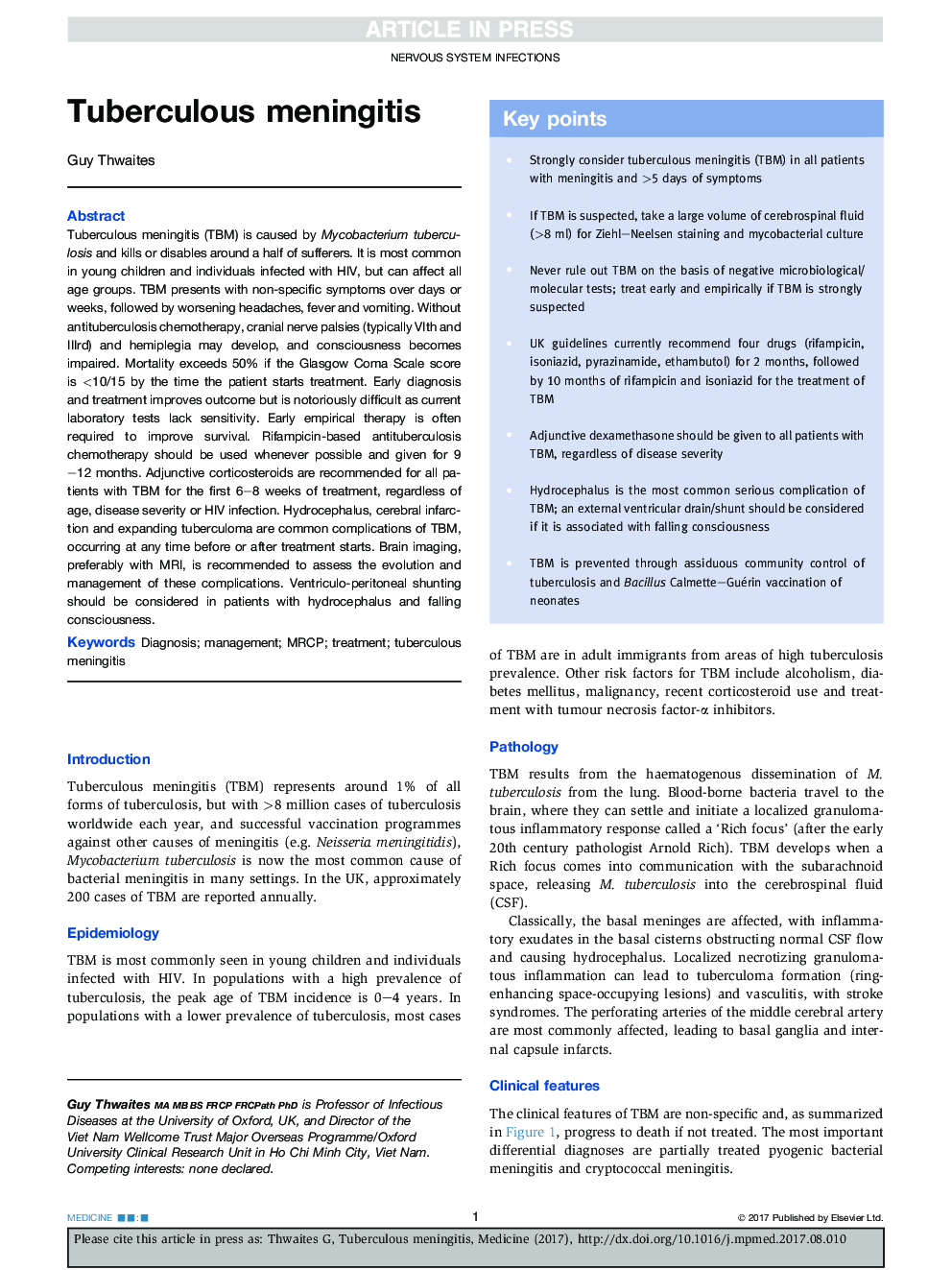| Article ID | Journal | Published Year | Pages | File Type |
|---|---|---|---|---|
| 8764160 | Medicine | 2017 | 4 Pages |
Abstract
Tuberculous meningitis (TBM) is caused by Mycobacterium tuberculosis and kills or disables around a half of sufferers. It is most common in young children and individuals infected with HIV, but can affect all age groups. TBM presents with non-specific symptoms over days or weeks, followed by worsening headaches, fever and vomiting. Without antituberculosis chemotherapy, cranial nerve palsies (typically VIth and IIIrd) and hemiplegia may develop, and consciousness becomes impaired. Mortality exceeds 50% if the Glasgow Coma Scale score is <10/15 by the time the patient starts treatment. Early diagnosis and treatment improves outcome but is notoriously difficult as current laboratory tests lack sensitivity. Early empirical therapy is often required to improve survival. Rifampicin-based antituberculosis chemotherapy should be used whenever possible and given for 9-12 months. Adjunctive corticosteroids are recommended for all patients with TBM for the first 6-8 weeks of treatment, regardless of age, disease severity or HIV infection. Hydrocephalus, cerebral infarction and expanding tuberculoma are common complications of TBM, occurring at any time before or after treatment starts. Brain imaging, preferably with MRI, is recommended to assess the evolution and management of these complications. Ventriculo-peritoneal shunting should be considered in patients with hydrocephalus and falling consciousness.
Related Topics
Health Sciences
Medicine and Dentistry
Medicine and Dentistry (General)
Authors
Guy Thwaites,
